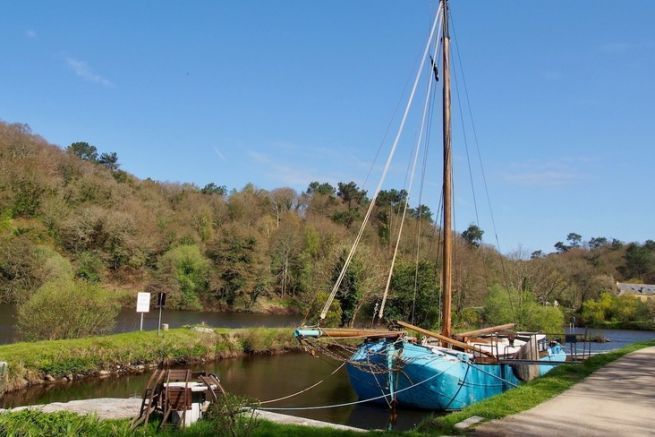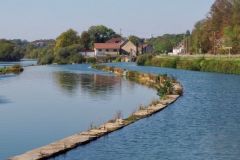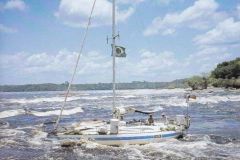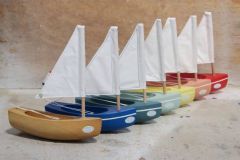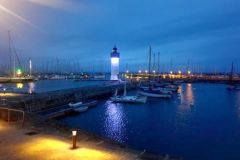The Blavet was a major link in the Nantes-Brest Canal, until the Guerlédan dam blocked its course, flooding the valley and 17 of the canal locks. This structure also cut the link between Nantes and Brest. Little by little, the section between the lake and Pontivy was abandoned and it is only very recently that 3 locks have been renovated, allowing to go up a few kilometers beyond Pontivy.
A navigation that must be earned
The Blavet makes it possible to join Lorient to Pontivy, then to the "Nantes" branch of the canal. However, several obstacles persist, which have contributed to keeping this waterway free of an influx of boaters. In Hennebont, the crossing of the Jehanne-la-Flamme bridge puts off more than one, while from the canal, it is necessary to cross a ladder of 54 locks in 24 km to reach Pontivy. However, the route is superb, on a river which is certainly canalized, but which has remained sinuous and wild. A real concentrate of Brittany where cliffs and reed beds, chapels and mills follow one another for as many beautiful stops.
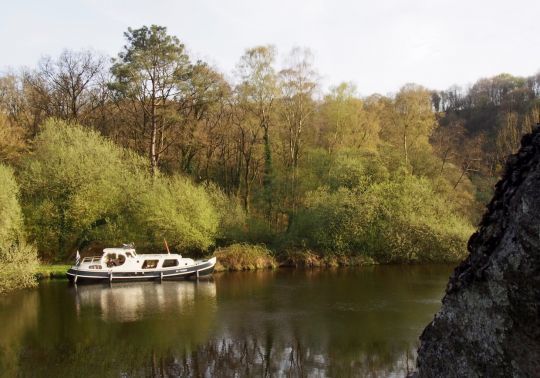
A little-known waterway, frequented by traditional boats
Pontivy is a city of water, founded around the bridge built by the monk Ivy, then in the shadow of the castle of Rohan, until it was renamed Napoleonville when the emperor made it a garrison town. This is what the members of the smiling team of the Tourist Office explain to us. Their floating office, the Duchess Anne is a former 28-meter sand pit that does not hesitate to cast off to promote the territory. For our part, we sail for the occasion on board the Antares this 11 meter long Dutch boat was built in riveted iron in the 1900s. It used to transport cattle and fodder on the Frisian canals, before being converted to pleasure boating and then joining the fleet of Brittany boating, the only rental company on the route.
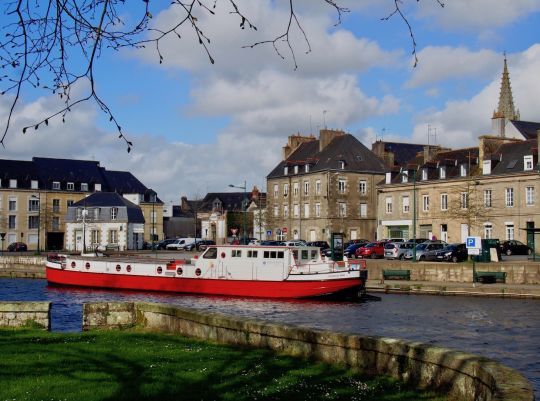
The privilege of having a lock keeper all to yourself
The lock keepers are itinerant. They move on request and accompany us from lock to lock. This is all the less a constraint that all are of a great availability and to the rhythm of the boaters and to the fishing and photo stops. L water of the Blavet is dark, almost black and loaded with peat like that of Shannon in Ireland. After a stopover in Gohazé then to Saint Michel to admire the chapels lost in the greenery , we manage to in Rimaison. Kayakers play in the current veins at the foot of the old mill. The site is flowery, peaceful and enchanting in the evening air.
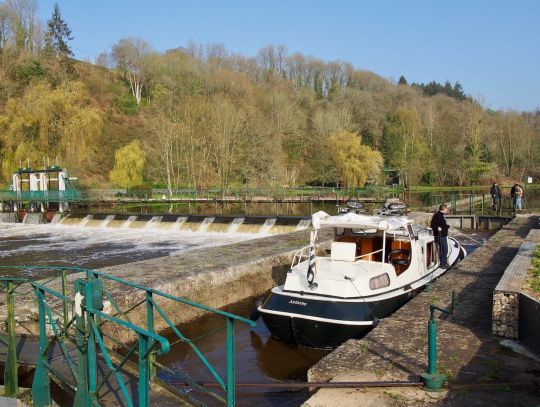
Fishers with feathers and fur
The small port of Saint-Nicolas-des-Eaux is touristy and animated. The Iron Venus, a monumental metal sculpture, dominates the lock. It opens on a magnificent loop lined with steep woods, golden rocks and marshes full of birds that you can follow until the Saint Gildas chapel. Built on the site of an ancient hermitage, it is embedded under a rocky promontory. From the lock of Boternau, the weirs are equipped with fish passes, which favor the ascent of migratory species such as salmon, eel, shad or lamprey. This is what Solène Le Bourhis, the passionate fishing guide who works at the Quelennec lock, explains to us. This richness of fish attracts of course other gourmets like herons, cormorants, kingfishers or otters.
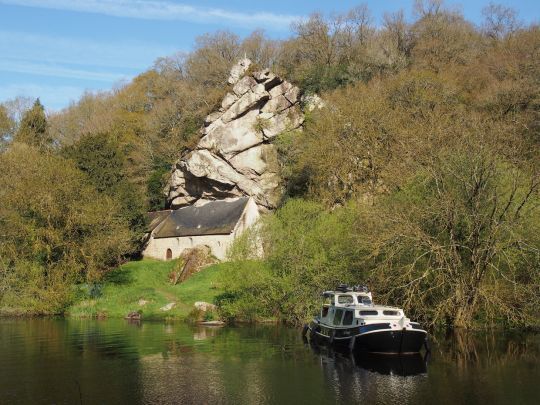
Between sea and river, the pleasures of the estuary
Lochrist was an industrial site where generations of farmers became metal workers and manufactured sheets for the navy and canneries. The lock of Poulvern is the last of the river course. Downstream, the river is subject to the tide and the crossing is only possible 2 hours before and after high tide. In Hennebont, a pontoon on the right bank allows you to wait for the right moment to cross the Jehanne-la-Flamme bridge and reach the port and the walled city, surrounded by ramparts.
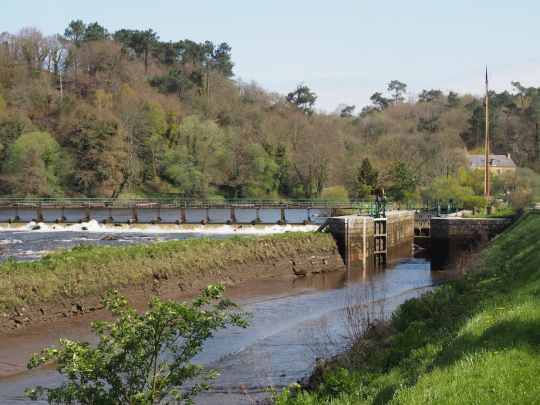
Further downstream, it is a festival of woods and rocks populated by sea birds, not to mention the boat graveyard where the silhouettes of the tuna boats continue to receive the tributes of the sea at each tide. Then comes Lorient and its multiple possibilities of stopovers.
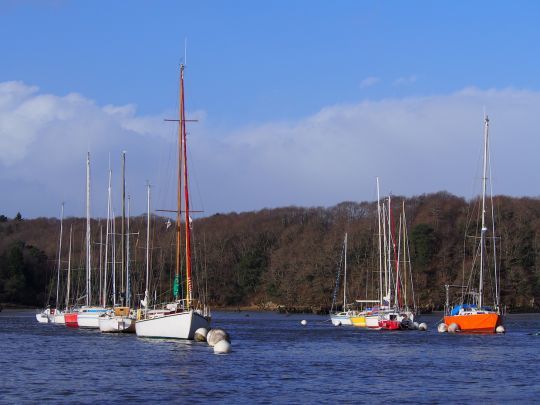
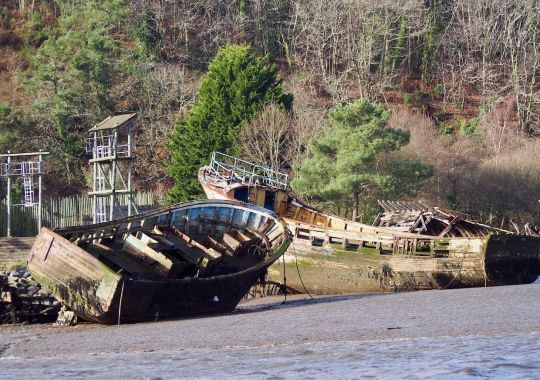
Local tips and tricks:
The lock keepers being itinerant, it is necessary to inform the service between 24 and 48 hours in advance (02 97 75 12 45)
The locks are gradually reopening upstream of Pontivy. Crossing them is the best way to encourage the Region to continue its efforts.
A certain number of lock houses now host activities related to the river, like the one in Quelennec where Solène le Bourhis organizes fly tying courses and excursions s nature.
The Duchess Anne this building is home to the Pontivy Tourist Office. You can rent electric bikes.
At PK 14.6, a very nice sunken path leads to the Saint-Nicodème chapel which conceals all the charm of these places of worship lost in the greenery.
A grocery store of first necessity is installed in the lock house of Saint-Nicolas-des-Eaux. Otherwise, the creperie le Chalet is close by on the platform.
Brittany boating, the local rental company offers a fleet of 4 pretty traditional Dutch boats.
Don't miss the opportunity to park at KP 40.2 and follow the steep path to Poul-Fétan, a traditional village renovated and animated by local craftsmen.
L' ecomuseum of Lochrist traces the history of the forges.
L he Jehanne-la-Flamme bridge is crossed around the half tide for benefit both air and water draught. Ratings are displayed in real time on a lighted panel downstream of the structure.
The Ty mor hold on the right bank is the most practical of the course. She e s t located at 2 steps of excellent building sites naval.
Attention under the p have de Loco yar n, a pile of stones the unmarked path clutters the middle of the arch. We will pass to the right or left third of the bridge arch
The Blavet in brief:
- Length 76 km
- 27 locks operated by itinerant lock keepers
- Speed limit of 8 km/h
- Vignette and navigation tax: no
- Navigation manager: Brittany Region - Direction des voies navigables
- Template: 26 x 4.60 m
- Minimum air draft: 20 m downstream from Hennebont, 3.00 m upstream
- Minimum draught: 1.40 m upstream of Hennebont
- Renter : Brittany Boating in Bieuzy
- Unemployment period: consult the website of the Brittany Region
- Smartphone application : no
